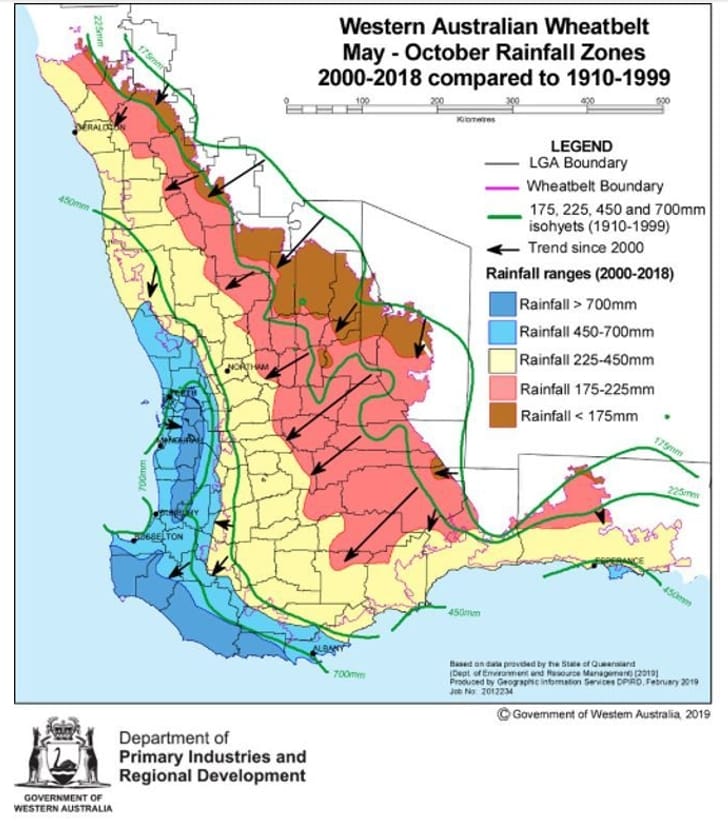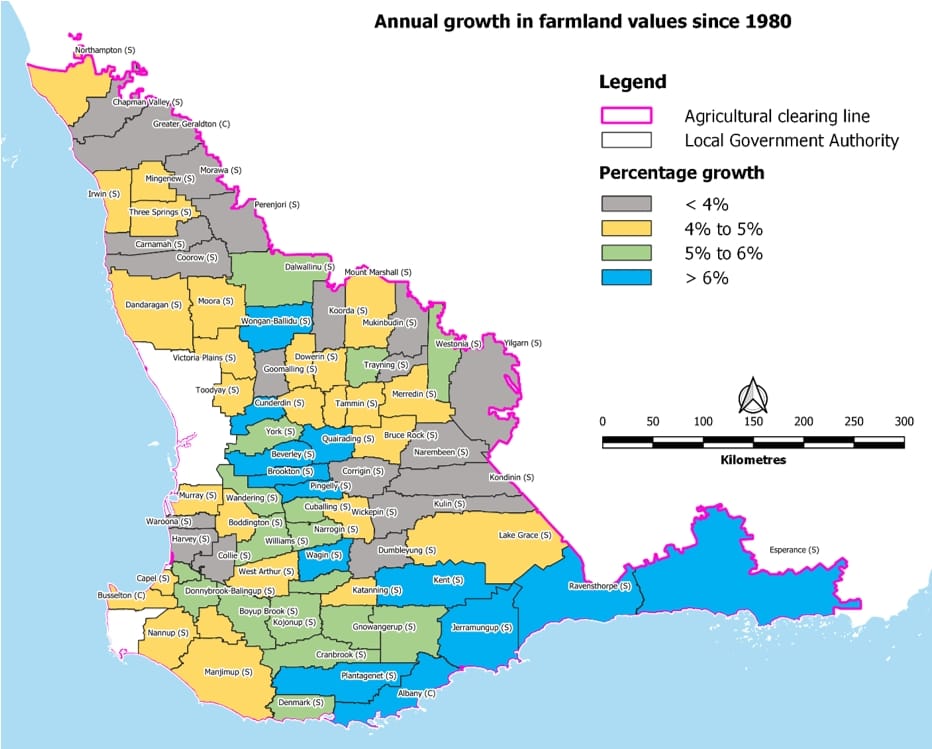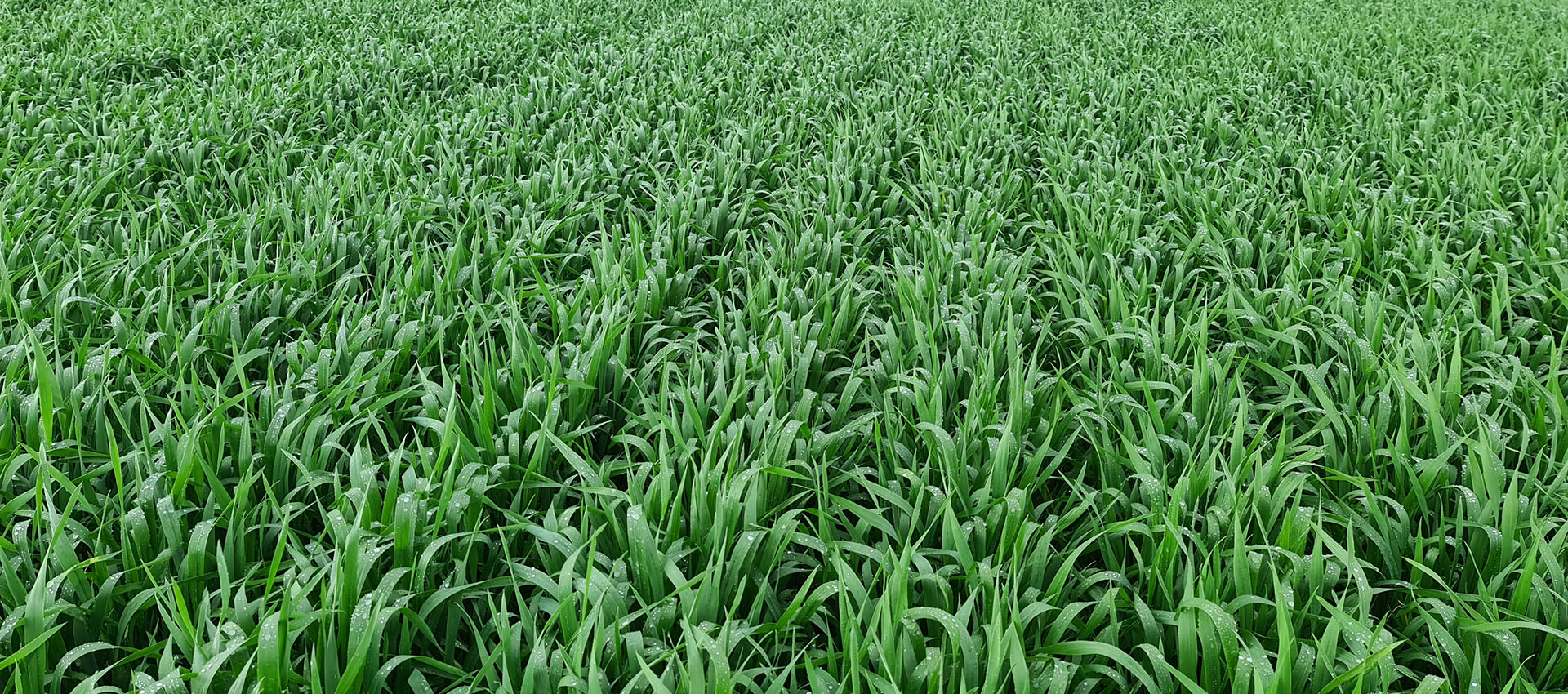A situation has emerged, fuelled by climate and technology change, where there is now a great southland of some very valuable farmland in Western Australia.
The challenge to frontier pioneers in the TV programs of my youth was: “Head west!” resulting in thousands of hopefuls trekking westwards in search of fortune. Australia’s west in recent years has certainly offered up its grain treasures, with consecutive bumper harvests in 2021 and 2022. This has fuelled farmland prices to remarkable heights (see Rural Bank 2022), despite the background challenge of a drying, warming climate (Figure 1).

So profitable has been grain production in Western Australia in recent years that it is difficult to reconcile those achievements with the cautions of climate scientists who in viewing Figure 1 comment that: “There has been dramatic movement of isohyets to the west after about 1990. The arrows in Figure 1 show how far the May to October isohyets have moved since 2000. Significant areas of the north-east grainbelt are now at high risk of rainfall too low for profitable agriculture (brown area in Figure 1).”a Yet despite this underlying climate challenge, farmland prices across Western Australia’s grainbelt continue to trend upwards (Figure 2).b
When you stand back and examine how prices of farmland in Western Australia have altered since the 1980s, it’s clear that land in the higher rainfall, cooler southerly parts of Western Australia’s grain belt mostly have experienced greater growth rates.

Noting that the main source of growth in farm business wealth is often land appreciation, it follows that farmers in these more southerly and south-westerly locations have experienced substantially greater wealth appreciation in recent decades than their farming colleagues in many more northerly or drier locations.
Some simple sums display the magnitude of the wealth divergence between regions. Just like the ‘compare the pair’ superannuation advertisements on TV; imagine two farmers who in 1980 each bought a farm for $500,000. By 2023, what would be the value of each farm, if one experienced an annual growth in farmland value of 7% while the other experienced only 4%?. The surprising answer is that the farm that experienced the higher growth rate would now be worth $10.1 million; but the other farm would only be worth $2.8 million.
So the situation has emerged, fuelled by climate and technology change, where there is now a great southland of some very valuable farmland in Western Australia!
References
Rural Bank (2022) Australian Farmland Values 2022 report. Available at: https://www.ruralbank.com.au/knowledge-and-insights/publications/farmland-values/
a A quote from DPIRD (2020): cited from https://www.agric.wa.gov.au/climate-change/climate-trends-western-australia
b I would like to thank Mariana Para Loza for her assistance in generating Figure 2.
Expert grains industry analysis and commentary from AEGIC’s Economics and Market Insight Team on a range of big-picture topics that affect Australia’s export grains sector. Read the Horizons back catalogue.


